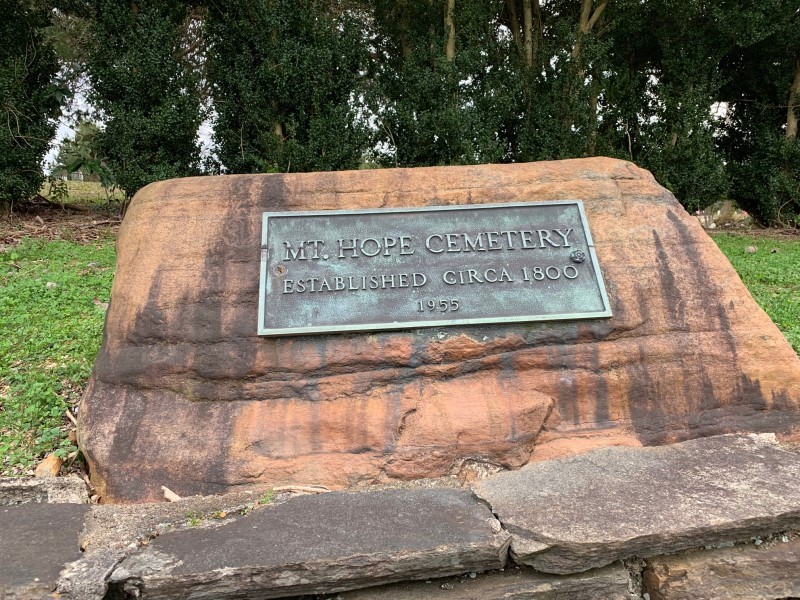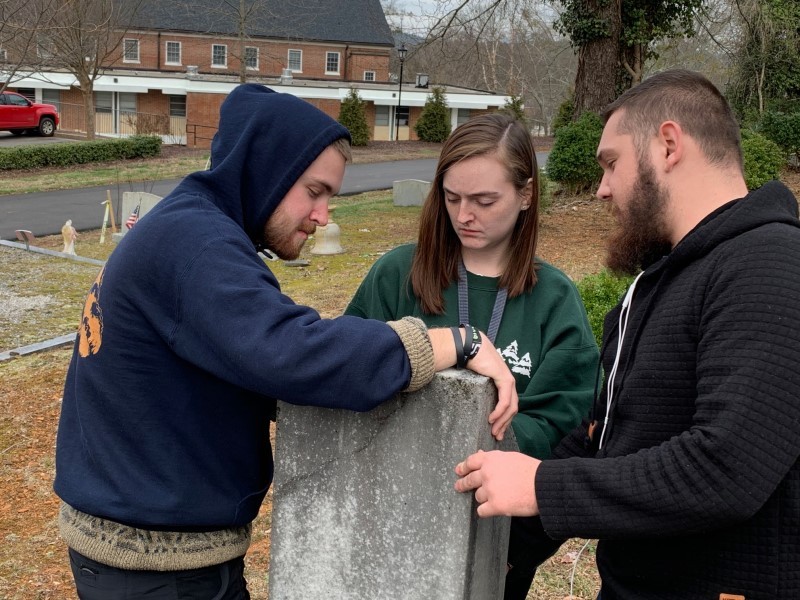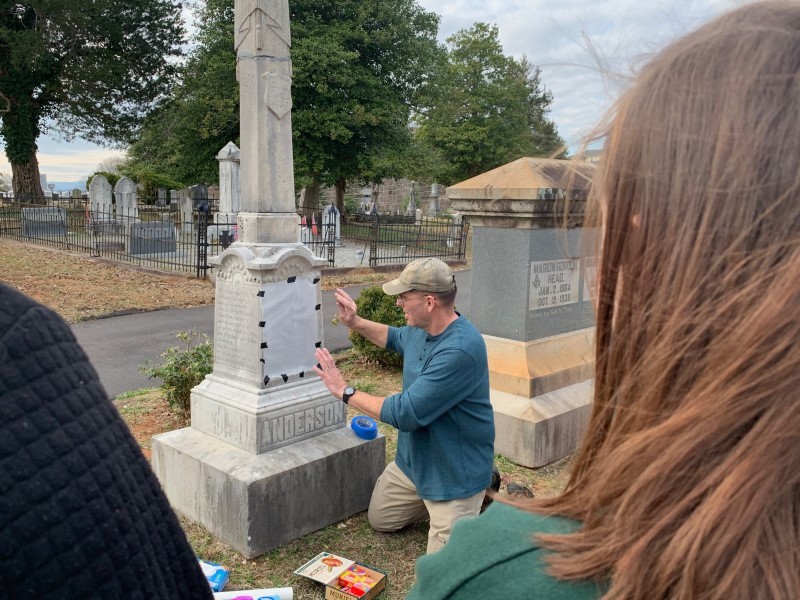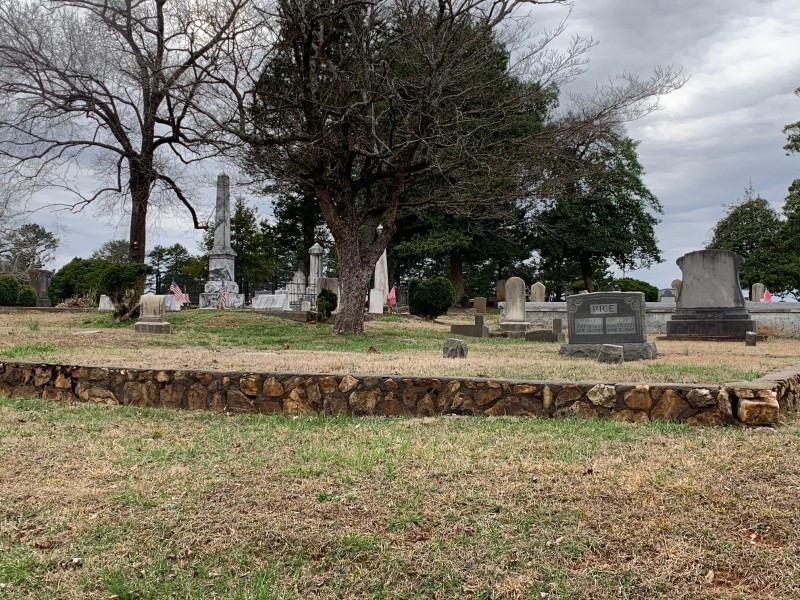For about two years now, some students at the University of North Georgia have studied in a rather unusual setting - the historic Mt. Hope Cemetery in Dahlonega.
While the students are taking a class designed by the Appalachian Studies Center, they're doing much more than just getting a class credit as they work to maintain and preserve the headstones at the cemetery on W. Main Street.
Rosann Kent, the Director of the Appalachian Studies Center, said the UNG students are working with the Dahlonega Cemetery Committee cleaning headstones, clearing vegetation, even creating a brochure that the city will use to promote walking tours of the grounds.
Kent said in a recent interview that even though her job is teaching the students, the project strikes a personal chord for her.
"I grew up with grandparents who often stopped in the days before roadside parks at family cemeteries - which in those days were our roadside parks - and we picnicked there and I got to learn about family history, so I've always had a deep appreciation for them," Kent said. "Plus, it's an awesome teaching tool. It's an outdoor museum. You can teach history, you can teach science, you can teach civics."
In fact, various departments at UNG have piggy-backed on what Kent is doing. Biology students, for example, have worked on bird identification at the cemetery. Education students have conducted walking tours. Right now, students have taken on the daunting task of digitally mapping the 3,000 marked graves at Mt. Hope.
Chris Worick, Chairman of the Dahlonega Cemetery Committee, said he has been impressed with the enthusiasm he's seen among the students, especially since cleaning headstones - many of them centuries old - is no easy task. He said the students realized there was work that needed to be done, and they did it. All they needed was a little direction.
"The city does the job of maintaining the area as a whole," Worick said, but the problem arose with the older family plots that no one was maintaining. "We finally got to the point where we said well if nobody's maintaining them, someone needs to step in here and maintain them just...to be able to preserve these [historic markers]."
Worick also has taught students the art of headstone rubbing, which allowed them to see the detail on some of the older stones no longer visible to the naked eye.
Kent said she's enjoyed watching her students take ownership of the preservation at Mt. Hope, even though she's received some entertaining comments from a few of them.
"I've gotten comments such as 'this is oddly satisfying' or 'this feels like manicuring the dead' or 'this is weird but good,'" Kent said with a laugh.
The students themselves said they've been surprised at how fulfilling the class has been, even as they've fielded questions from their friends about "working in the cemetery."
"It's always nice just knowing the history of the town you live in, [learning] what all happened here 100, 200 years ago," said senior psychology major Hunter McBride of Athens.
McBride and fellow class member senior criminal justice major Hunter Ciesa of Dalton both have worked in landscaping and they have volunteered to work apart from class time to remove vegetation that is damaging some of the older markers.
Kent is hopeful the Mt. Hope project will continue. She and Worick and five students were able to travel to Washington, D.C. in December to present their work at the Appalachian Teaching Project (ATP) Symposium.
"We've asked the Appalachian Regional Commission to fund us another year...but our idea is as students get involved beyond this class, that Greek Life will take it on or UNG Serves or other service organizations will become more and more excited about it," Kent said. "You can imagine [our class] as training the trainers. We want it to move beyond these 10 people."
Clark Leonard, Communications Specialist with the University of North Georgia Division of University Relations, contributed to this story.




http://accesswdun.com/article/2020/2/878898/mt-hope-cemetery-its-an-outdoor-museum
